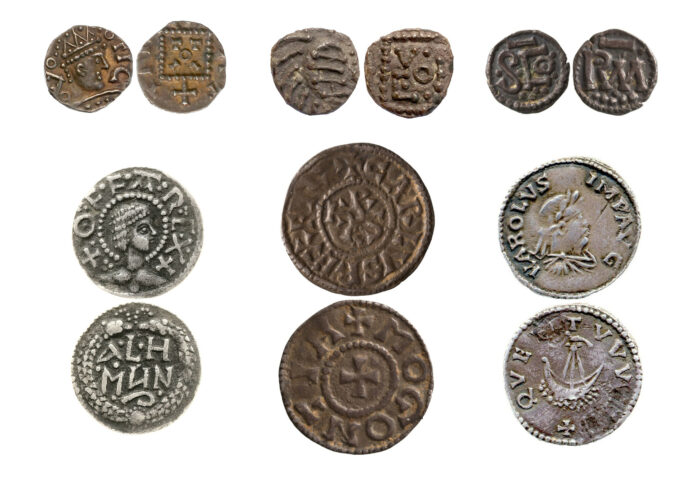Researchers have unraveled the mysterious origins of silver that was used to make coins during the early medieval period in Europe.
For a study published in the journal Antiquity, a team of experts analyzed the chemical makeup of 49 silver coins minted between A.D. 660 and A.D. 820 in what is now England, the Netherlands, Belgium and northern France.
The results of the study reveal the the significant role that silver coinage had in the economies of early medieval Europe.
During this period, the use of silver coinage rose dramatically across northwestern Europe. But where most of this silver came from had long remained a mystery.
© The Fitzwilliam Museum, University of Cambridge
“It has long been clear there were big changes in the money supply starting in about A.D. 670. This was when the silver penny became established, and the quantity of cash in circulation increased massively. But the question was where the silver came from that supported this change. We wanted to answer that question,” Rory Naismith, a co-author of the study with the University of Cambridge, told Newsweek.
There had been speculation that the silver came from Melle in western France or from an unknown mine. Another hypothesis stated that the source of the precious metal was melted-down church silver. But concrete evidence for any of these explanations was lacking.
In the latest study, the authors investigated the 49 coins using a novel technique known as laser ablation analysis. This involves using a laser to dig into a minute area of the coin—representing a a tiny fraction of a millimeter—in order to shed light on its chemical makeup, and ultimately, its origin.
“It is important to go beneath the surface because the outermost layer is often enriched and gives an unrepresentative view of what the overall content of the coin might be,” Naismith said.
“There were two things we wanted to find out using this method, both of which tell us about the potential source of the silver. One is the elemental composition: what elements are in the coin, with the small amounts of things like gold or bismuth being most revealing; the second is lead isotopes, or atomic variants of lead, which vary between regions and mines. This method gives good results but with minimal physical impact on the coins.”
The analysis revealed that the silver used to make the coins came from two distinct sources, depending on their age.
The team found that the older coins, dating from A.D. 660-750, used silver mined in the eastern Mediterranean region within the boundaries of what was then the Byzantine Empire. This silver was likely melted down from valuable Byzantine silver objects.
“It’s fair to say we were surprised by this result,” study lead author Jane Kershaw with the University of Oxford in the United Kingdom said in a press release. “We know of some surviving Byzantine silver from Anglo-Saxon England, most famously from Sutton Hoo, but far greater amounts of Byzantine silver must have originally been held in Anglo-Saxon stores. Connections between Byzantium and Anglo-Saxon England were closer than most people think.”
“This was quantitative easing, elites were liquidating silver stored in valuable objects and using that silver to make coins that then circulated widely. It would have had a big impact on people’s lives. Far more people than before would have used coined money and thought in terms of monetary values.”
The source of the silver used to make the later coins, dating from A.D. 750-820, primarily appears to be freshly mined metal from Melle in France.
The “footprint” of silver from this source increased significantly in this latter period, particularly following of a reform of the coinage by the powerful early medieval ruler Charlemagne in A.D. 793. This suggests that political and administrative factors helped to drive the spread of this silver, according to Naismith. (Charlemagne was a Frankish king who later became emperor and ruled much of western Europe during the late 8th century and early 9th century.)
“There are a lot of interesting conclusions to draw from this research. It shows how important the economic strength of the eastern Mediterranean was for reviving northwest Europe, and a valuable follow-up project would be to examine earlier movements of silver between east and west,” Naismith told Newsweek.
“This research also underlines the impact of the penny, which was a relatively more versatile coin than the gold ones that had come earlier—and which was available in much larger quantity.”
The pivot towards Melle silver also indicates the increasing dependence of the English kingdoms on their Frankish neighbors, a group of Germanic peoples who lived in western and central Europe during the early Middle Ages. They gave their name to present-day France.
Do you have a tip on a science story that Newsweek should be covering? Do you have a question about archaeology? Let us know via [email protected].
Uncommon Knowledge
Newsweek is committed to challenging conventional wisdom and finding connections in the search for common ground.
Newsweek is committed to challenging conventional wisdom and finding connections in the search for common ground.


